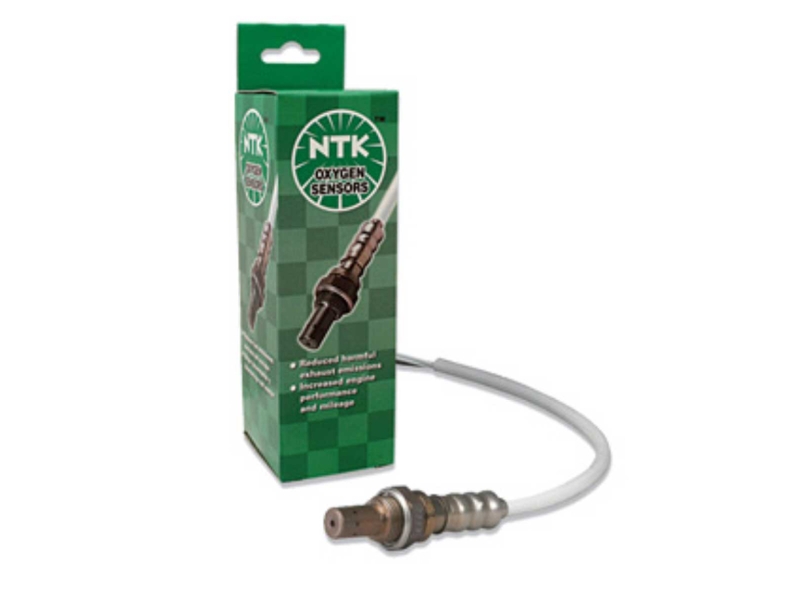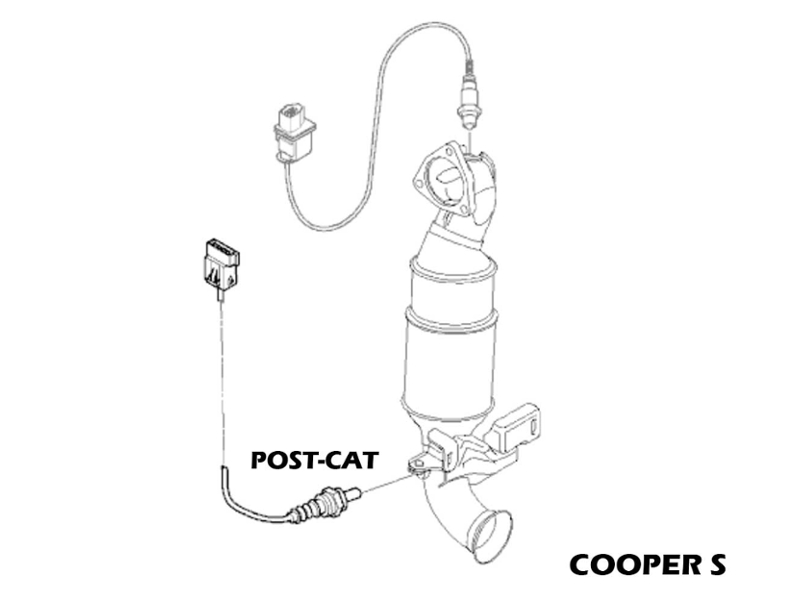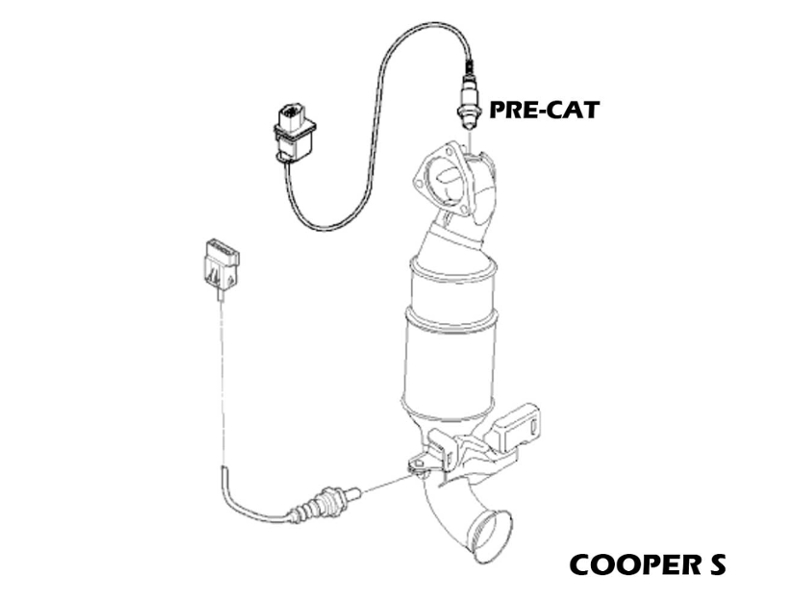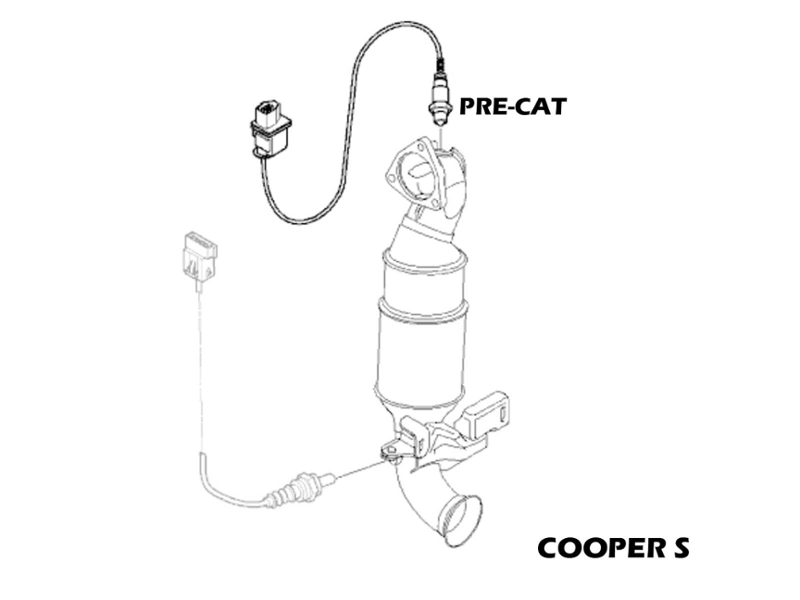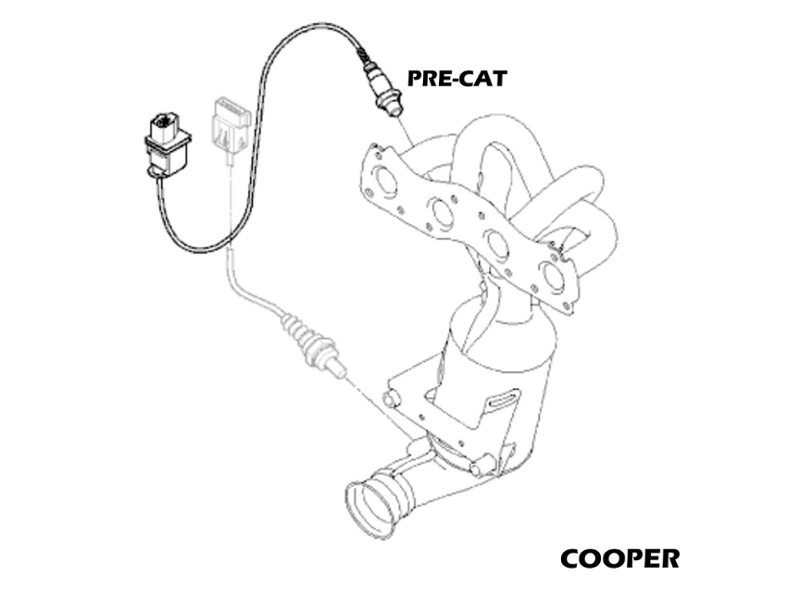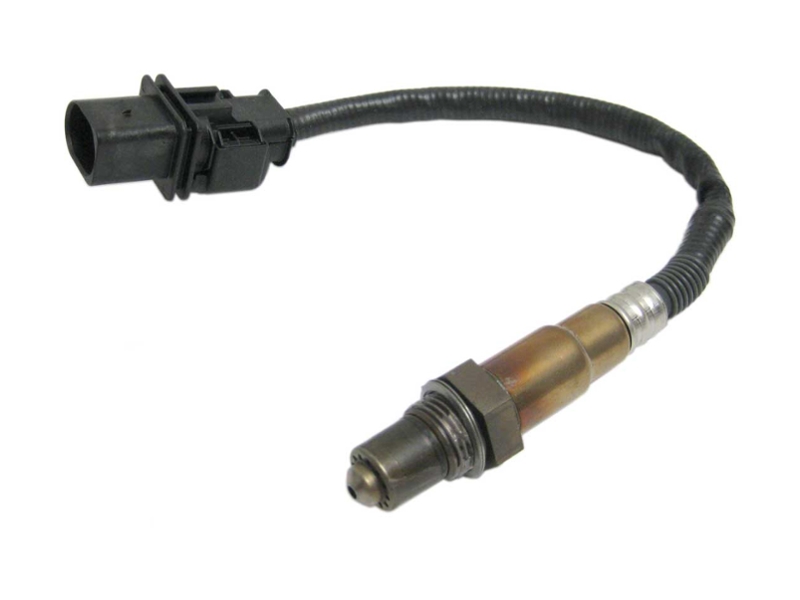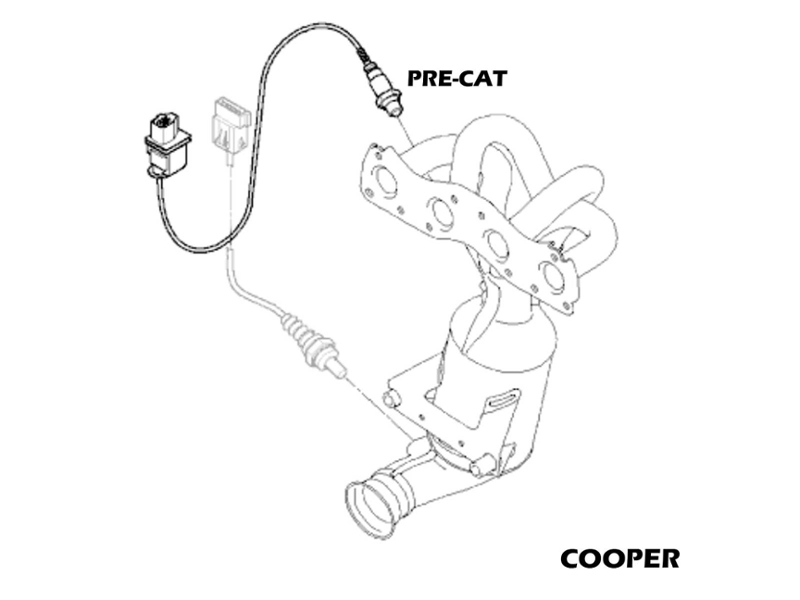For 2nd generation MINI Cooper & S models including R56 Hardtop R55 Clubman R57 Convertible R58 Coupe R59 Roadster R60 Countryman R61 Paceman

Aftermarket Value Priced replacement Post-Cat or Downstream O2 Oxygen Sensor (Lambda Sensor) from HGK / NTK or Bosch (depending on supply).
Fits the following models:
2007-2013 R56 MINI Cooper and Cooper S Hardtop
2008-2014 R55 MINI Cooper and Cooper S Clubman
2009-2015 R57 MINI Cooper and Cooper S Convertible
2012-2015 R58 MINI Cooper and Cooper S Coupe
2012-2015 R59 MINI Cooper and Cooper S Roadster
2013-2016 R61 MINI Cooper and Cooper S Paceman
2011-2016 R60 MINI Cooper and Cooper S Countryman
ABOUT O2 SENSORS
An O2 sensor (lambda sensor) has an expected life span of about 30,000 to 50,000 miles. Sensors may fail prematurely if clogged with carbon, or contaminated by lead from leaded gas or silicone from an antifreeze leak or from silicone sealer.
O2 sensors become sluggish as they age. Eventually the signal does not change at all. When this happens, the EML and/or check engine light may come on, and the engine may experience drivability problems or damage caused by an overly rich fuel condition. High fuel consumption, high CO and HC emissions, poor idle, and/or hesitation during acceleration are typical complaints.
If the average voltage from the O2 sensor is running high (more than 0.50V), it indicates a rich condition, possibly due to a bad MAP, sensor or leaky injector. If the average voltage reading is running low (less than 0.45V), the mixture is running lean possibly due to a vacuum leak or because the sensor itself is bad. If the O2sensor continually reads high (rich), it will cause the engine computer to lean out the fuel mixture in an attempt to compensate for the rich reading. This can cause lean misfire, hesitation, stumbling, poor idle, high hydrocarbon emissions (from misfiring) and engine damage.
If the O2 sensor continually reads low (lean), it will cause the engine computer to enrichen the fuel mixture. Injector pulse width will be increased causing fuel consumption and carbon monoxide emissions to go up. Especially in a performance tuned vehicle, a constantly rich fuel mixture can cause the catalytic converter to overheat and it may be melted.
Oxygen sensors should be tested at each tune-up. Failed or worn out oxygen sensors can cause:
- Failed Emission Tests
- Increased Fuel Consumption
- Failed Catalytic Converters
- Poor Driveability
- Increased Emissions
NTK OXYGEN SENSORS
NTK is the world’s largest supplier and manufacturer of original equipment oxygen sensors. NTK Oxygen Sensors combines expertise with innovation and delivers Oxygen Sensors with superior fit, form and function. When you require the best, count on NTK Oxygen Sensors to deliver.
Oxygen Sensors are used in modern automobiles to control the fuel and ignition systems to optimize a car's performance in the areas of emissions and fuel economy. Sensors are located before and after the catalytic converter to check on the amount of oxygen in the exhaust. The sensor sends signals to the car's on-board computer, which then can adjust several variables, including air/fuel ratio and timing, in order to bring the engine into the optimum operating range.
OEM Quality and Reliability
Each NTK Oxygen Sensor is:
- Extensively Tested During Manufacture to Guarantee Quality and Reliability
- Supplied With a Factory-Fitted OEM Connector for Easy Installation
- Precision manufactured with a sensing element incorporating NTK's premier technical ceramics
BOSCH OXYGEN SENSORS
Bosch invented the automotive oxygen sensor, which is also referred to as an O2 sensor or lambda sensor. Our Premium Oxygen Sensors are thimble and planar switching sensors that are designed to meet or exceed OE specifications.
Features:
- Double laser-welded stainless steel body protects against contamination
- Seared protection tube due to 100% functional quality test
- Pre-coated threads with anti-seize compound right out of the box
- True Direct-fit OE connectors and harness
MINI Cooper (R50, R52, R53) 2002-2006 - Post-catalyst oxygen sensor replacement - DIY Repair
Aftermarket Value Priced replacement Post-Cat or Downstream O2 Oxygen Sensor (Lambda Sensor) from HGK / NTK or Bosch (depending on supply).
Fits the following models:
2007-2013 R56 MINI Cooper and Cooper S Hardtop
2008-2014 R55 MINI Cooper and Cooper S Clubman
2009-2015 R57 MINI Cooper and Cooper S Convertible
2012-2015 R58 MINI Cooper and Cooper S Coupe
2012-2015 R59 MINI Cooper and Cooper S Roadster
2013-2016 R61 MINI Cooper and Cooper S Paceman
2011-2016 R60 MINI Cooper and Cooper S Countryman
ABOUT O2 SENSORS
An O2 sensor (lambda sensor) has an expected life span of about 30,000 to 50,000 miles. Sensors may fail prematurely if clogged with carbon, or contaminated by lead from leaded gas or silicone from an antifreeze leak or from silicone sealer.
O2 sensors become sluggish as they age. Eventually the signal does not change at all. When this happens, the EML and/or check engine light may come on, and the engine may experience drivability problems or damage caused by an overly rich fuel condition. High fuel consumption, high CO and HC emissions, poor idle, and/or hesitation during acceleration are typical complaints.
If the average voltage from the O2 sensor is running high (more than 0.50V), it indicates a rich condition, possibly due to a bad MAP, sensor or leaky injector. If the average voltage reading is running low (less than 0.45V), the mixture is running lean possibly due to a vacuum leak or because the sensor itself is bad. If the O2sensor continually reads high (rich), it will cause the engine computer to lean out the fuel mixture in an attempt to compensate for the rich reading. This can cause lean misfire, hesitation, stumbling, poor idle, high hydrocarbon emissions (from misfiring) and engine damage.
If the O2 sensor continually reads low (lean), it will cause the engine computer to enrichen the fuel mixture. Injector pulse width will be increased causing fuel consumption and carbon monoxide emissions to go up. Especially in a performance tuned vehicle, a constantly rich fuel mixture can cause the catalytic converter to overheat and it may be melted.
Oxygen sensors should be tested at each tune-up. Failed or worn out oxygen sensors can cause:
- Failed Emission Tests
- Increased Fuel Consumption
- Failed Catalytic Converters
- Poor Driveability
- Increased Emissions
NTK OXYGEN SENSORS
NTK is the world’s largest supplier and manufacturer of original equipment oxygen sensors. NTK Oxygen Sensors combines expertise with innovation and delivers Oxygen Sensors with superior fit, form and function. When you require the best, count on NTK Oxygen Sensors to deliver.
Oxygen Sensors are used in modern automobiles to control the fuel and ignition systems to optimize a car's performance in the areas of emissions and fuel economy. Sensors are located before and after the catalytic converter to check on the amount of oxygen in the exhaust. The sensor sends signals to the car's on-board computer, which then can adjust several variables, including air/fuel ratio and timing, in order to bring the engine into the optimum operating range.
OEM Quality and Reliability
Each NTK Oxygen Sensor is:
- Extensively Tested During Manufacture to Guarantee Quality and Reliability
- Supplied With a Factory-Fitted OEM Connector for Easy Installation
- Precision manufactured with a sensing element incorporating NTK's premier technical ceramics
BOSCH OXYGEN SENSORS
Bosch invented the automotive oxygen sensor, which is also referred to as an O2 sensor or lambda sensor. Our Premium Oxygen Sensors are thimble and planar switching sensors that are designed to meet or exceed OE specifications.
Features:
- Double laser-welded stainless steel body protects against contamination
- Seared protection tube due to 100% functional quality test
- Pre-coated threads with anti-seize compound right out of the box
- True Direct-fit OE connectors and harness
MINI Cooper (R50, R52, R53) 2002-2006 - Post-catalyst oxygen sensor replacement - DIY Repair
-
Price : $21.90
